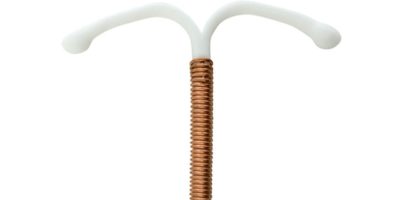Paragard IUD Risks, Breakage Concerns & Recalls
Paragard IUD is the only copper, nonhormonal IUD approved in the U.S. It’s generally safe and effective at preventing pregnancy. However, studies and FDA reports have shown that the Paragard IUD may break upon removal, causing complications and requiring surgery to remove fragments of the device. People are actively filing lawsuits against Paragard manufacturers.
- Legally reviewed by Julie Lawson Timmer, Esquire
- Last update: June 6, 2025
The Paragard IUD (intrauterine device) received U.S. Food and Drug Administration (FDA) approval more than 30 years ago to prevent pregnancy. However, the FDA has received thousands of reports that Paragard removal may result in the device breaking.
In response to Paragard IUD breakage reports, thousands of women have filed Paragard lawsuits, claiming Teva Pharmaceuticals (the device’s original maker) designed a defective device and failed to warn the public of the breakage risk. CooperSurgical purchased Paragard from Teva in 2017 and is also a defendant in Paragard lawsuits.
What Is Paragard & How Does It Work?
The Paragard IUD is a small T-shaped device wrapped with copper wire that doctors place in the uterus to prevent pregnancy. The copper in the IUD causes an immune response in the uterus, generating a toxic environment for sperm and preventing pregnancy.
How Paragard Compares to Other IUDs
Unlike other IUDs on the market, Paragard uses copper instead of hormones to prevent pregnancy. Women who cannot tolerate hormonal IUDs or don’t want to use hormones to prevent pregnancy may choose Paragard as their preferred form of birth control.
There are five IUDs available in the U.S.: Paragard, Mirena, Kyleena, Liletta and Skyla. Paragard is the only non-hormonal IUD approved in the U.S.
CooperSurgical says Paragard is effective for up to 10 years, though Planned Parenthood says it prevents pregnancy for up to 12 years. In contrast, Mirena and Liletta are good for eight years, Kyleena works for five years and Skyla prevents pregnancy for three years.
You can also use Paragard and some other IUDs as emergency contraception if inserted within five days after having unprotected sex.
| IUD Name | Contains Hormones | Years Effective | Emergency Contraception |
|---|---|---|---|
| Paragard | No | 10–12 | Yes |
| Mirena | Yes | 8 | Yes |
| Liletta | Yes | 8 | Yes |
| Kyleena | Yes | 5 | No |
| Skyla | Yes | 3 | No |
Paragard Breakage & Device Failure Risks
While Paragard is effective at preventing pregnancy, there is a risk that it can break when your doctor tries to remove it. Broken pieces of the IUD remaining in the uterus may lead to additional complications, such as pain, infection, bleeding and infertility.
What Do Studies Say About Paragard Breakage?
Studies on Paragard breakage suggest that it is more prone to break upon removal than hormonal IUDs. The following studies explain the risks.
- Trends in copper versus hormonal intrauterine device breakage reporting within the United States’ Food and Drug Administration Adverse Event Reporting System
- This 2023 study published in the journal Contraception examined FDA Adverse Events Reporting System (FAERS) reports and found a significantly higher percentage of breakage reports for Paragard IUDs than for hormonal IUDs. Of the adverse events reported, the study found that 9.6% were related to copper IUDs breaking, compared to just 1.7% for hormonal devices.
- Intrauterine Device Embedment Resulting in Its Fracture: A Case Series
- Another study published in 2021 in the Archives of Obstetrics and Gynaecology examined cases of IUD fracture in data from 2013 to 2019. Researchers found Paragard broke in 14 out of 1,120 insertions, a rate of 1.25%.
In contrast, Mirena had only one breakage out of 3,780 insertions (0.03%), and Skyla and Kyleena had no breakages out of 1,239 insertions.
There haven’t been any meaningful studies that have identified exactly why Paragard breaks. However, lawsuits say the device is prone to breakage during removal, even when properly implanted.
Complications From a Broken Paragard IUD
Broken Paragard IUDs can present serious complications — from pain to the need for surgery — especially if fragments of the device or bits of copper remain in the body. It’s important to note that not all people will experience complications.
- Adhesions (scar tissue) from copper fragments left in the body
- Bleeding
- Broken pieces damaging or embedding in the uterine wall
- Infection
- Infertility
- Pain
- The need for surgical removal of fragments (including hysterectomy)
Having an IUD break during removal can be a traumatic experience.
“After I got [the IUD] taken out and found out that the arm had broken off, I called my mom crying, really, really upset. And I found out my cousin had the same thing,” one Paragard recipient from Colorado told Drugwatch.
Have Any Paragard IUDs Been Recalled?
As of April 2025, neither CooperSurgical nor the FDA has recalled Paragon IUDs. The FDA has not issued any safety warnings regarding Paragard’s side effects.
While the FDA initiated an investigation into Paragard breakage reports and issued recommendations, CooperSurgical has yet to take action.
FDA Actions & Reports on Paragard IUD Breakage Risks
According to the most recent reports from the FDA’s Adverse Events Reporting System (FAERS), there were 7,466 reports of device breakage from 2009 through 2024. It’s important to note that FAERS reports are voluntary, so the FDA cannot verify that the device caused the issues.
In May 2021, the FDA began investigating reports of Paragard breakage and released its findings in December 2022. Based on its investigation, the FDA recommended label changes for removal instructions that could help mitigate breakage. These precautions include checking to see if Paragard is embedded in or has perforated the uterus before removal.
CooperSurgical did not provide the FDA with a risk analysis that offers information on what could cause breakages. As a result, the FDA concluded that it couldn’t determine how to best mitigate device breakage risks.
In response to the FDA’s original requests, CooperSurgical said it did not have “information regarding all testing that occurred during the product design phase or all testing that may have been requested by the Agency” before the device’s original approval. It also said there was “no significant increase in the number of reports of breakage events.”
CooperSurgical blamed the FDA’s perceived increase in breakage events on “stimulated reporting” driven by the increasing number of Paragard lawsuits.
Manufacturer’s Response to Paragard Safety Concerns
CooperSurgical hasn’t taken corrective actions in response to concerns over Paragard’s safety. As of April 2025, we have not found any new public Paragard warnings or changes in design in response to breakage reports.
The FDA approved changes to the Paragard label in 2024, but the most current label available on the Paragard website shows that it was last updated in February 2020. CooperSurgical and Teva didn’t reveal any details regarding how they are handling Paragard lawsuits in their 2024 annual reports.
Other Potential Health Risks & Side Effects of Paragard
In addition to potential breakage concerns, there are other Paragard side effects and risks. Generally, Paragard is considered safe and effective, but it’s important to know all potential risks.
- Anemia
- Back pain
- Embedment in the uterine wall
- Expulsion (the IUD falling out)
- Ectopic or intrauterine pregnancy
- Heavier, longer and more painful periods
- Infection (after insertion or removal)
- Spotting or irregular periods
- Uterine wall perforation during insertion
- Vaginitis
The most common side effects are changes in the intensity and length of periods. These may go away or become less severe in three to six months. If you are concerned about potential side effects, discuss them with your medical provider.
Copper Toxicity
Copper toxicity from Paragard is rare. It’s more likely to happen in women with a rare condition called Wilson disease, which causes copper buildup in the body. If you have this condition, talk to your doctor before using Paragard.
Symptoms of copper toxicity include vomiting (with possible blood), diarrhea, headaches, dark stools and abdominal pain.
What Should You Do if You Experience Paragard Complications?
Tell your doctor if you experience Paragard complications. Some Paragard side effects are serious and require immediate attention.
- Heavy vaginal bleeding
- Ill-smelling vaginal discharge
- Missed periods or other pregnancy symptoms
- Potential exposure to a sexually transmitted infection (STI)
- Serious abdominal pain or tenderness
- Unexplained fever
- Worsening pain in the pelvic area
How to Tell if Your Paragard IUD Is Broken or Misplaced
When Paragard breaks, it’s usually during removal. You’ll know because the IUD will be missing pieces when doctors remove it. Medical professionals should check if the IUD is intact after removal.
Sometimes, Paragard can migrate from its original insertion point. If the IUD has moved out of place, you may experience:
- Feeling Paragard in your vagina or near your cervix
- Irregular bleeding or bleeding after sex
- Painful sex for you or your partner
- Paragard strings missing or seeming longer than before
Contact your medical provider right away if you experience any of these symptoms. They can verify whether the device is out of place.
What Are the Options if Your Paragard IUD Breaks?
If your Paragard IUD breaks upon removal and a piece remains inside your body, your doctor will discuss surgical and nonsurgical options with you.
If your provider can locate the IUD fragment with an ultrasound, they may be able to remove it without surgery, depending on its location. This involves using forceps, hooks or clamps guided by the ultrasound to reach and remove the fragment.
Surgical techniques to remove IUD fragments include:
- Hysteroscopy
- Doctors perform hysteroscopy with or without anesthesia by inserting a thin tube with a light at the end through the vagina. They can locate the IUD fragment and remove it.
- Laparoscopy
- Laparoscopy is a minimally invasive surgical procedure requiring general anesthesia. Doctors will make a small incision near your belly button and insert a small camera into the body to locate the IUD. Then, surgical instruments can remove fragments.
Calling this number connects you with a Drugwatch.com representative. We will direct you to one of our trusted legal partners for a free case review.
Drugwatch.com's trusted legal partners support the organization's mission to keep people safe from dangerous drugs and medical devices. For more information, visit our partners page.



